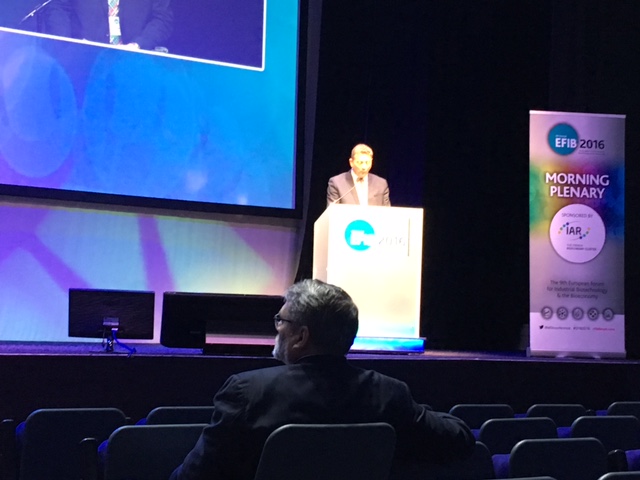Mark Simmers, CEO of Celtic Renewables (RN), announced this plan during the EFIB 2016, held in Glasgow. Simmers mentioned the enormous importance of the whiskysector for the Scottish economy, with an annual turn over of roughly 5 billion pounds. ‘Around 10 per cent of the total biomass is being used to distil these products. The other 90 per cent are made up of byproducts.’
In terms of volume, draff and pott ale are main waste streams which currently represent a negative value. Most distilleries discharge these sludgy streams either in waterways or use it as some sort of fertilizer. Per annum 700.000 tonnes of draff (75 % water) and 2 million tonnes of pot ale (97 % water) are produced by the Scottish sector alone.
Demoscale facility planned
CR has devised a process, using thermal hydrolysis and fermentation (enzymatic, bacterial), to convert these sludge streams into a solid fraction, suitable for animal feed, and a liquid fraction (acetone, butanol, ethanol).
This process has been scaled up at the Biobase Europe Pilot Plant in Gent, Belgium, where ‘the can do’-mentality has helped a lot, Simmers said. The next stage will be the development of an industrial/demoscale plant, which will be situated in Grangemouth, between Glasgow and Edinburgh. Estimated costs are around 20 million pounds, the capacity will hover between half a million and 1 million litres per year. ‘It is not easy to generate this kind of money, especially with the uncertainties resulting from Brexit. However, we are in an advanced stage in securing funding from the public and private side.’
Up north
The demoscale facility in turn would precede an industrial scale factory with a capacity of around 20 million litres. As the aforementioned waste streams are perishable, this factory most likely will be located in the heartland of the Scottish malt whisky-industry, more in the north of the country. In terms of feedstock availability, Simmers doesn’t expect a shortage for the time being. ‘We are also looking into other feedstocks in order to make our technology less dependent on malt whisky production and also to broaden the scope of our technology.’
In terms of cost competitiveness, Simmers expects to break even with the demoscale plant and to become profitable at the scale of the industrial facility. Animal feed needs to be imported into the UK and for the ethanol, acetone and butanol Simmers expects to find clients in specialty chemicals. ‘We are talking to companies in these domains and the interest is there.’



